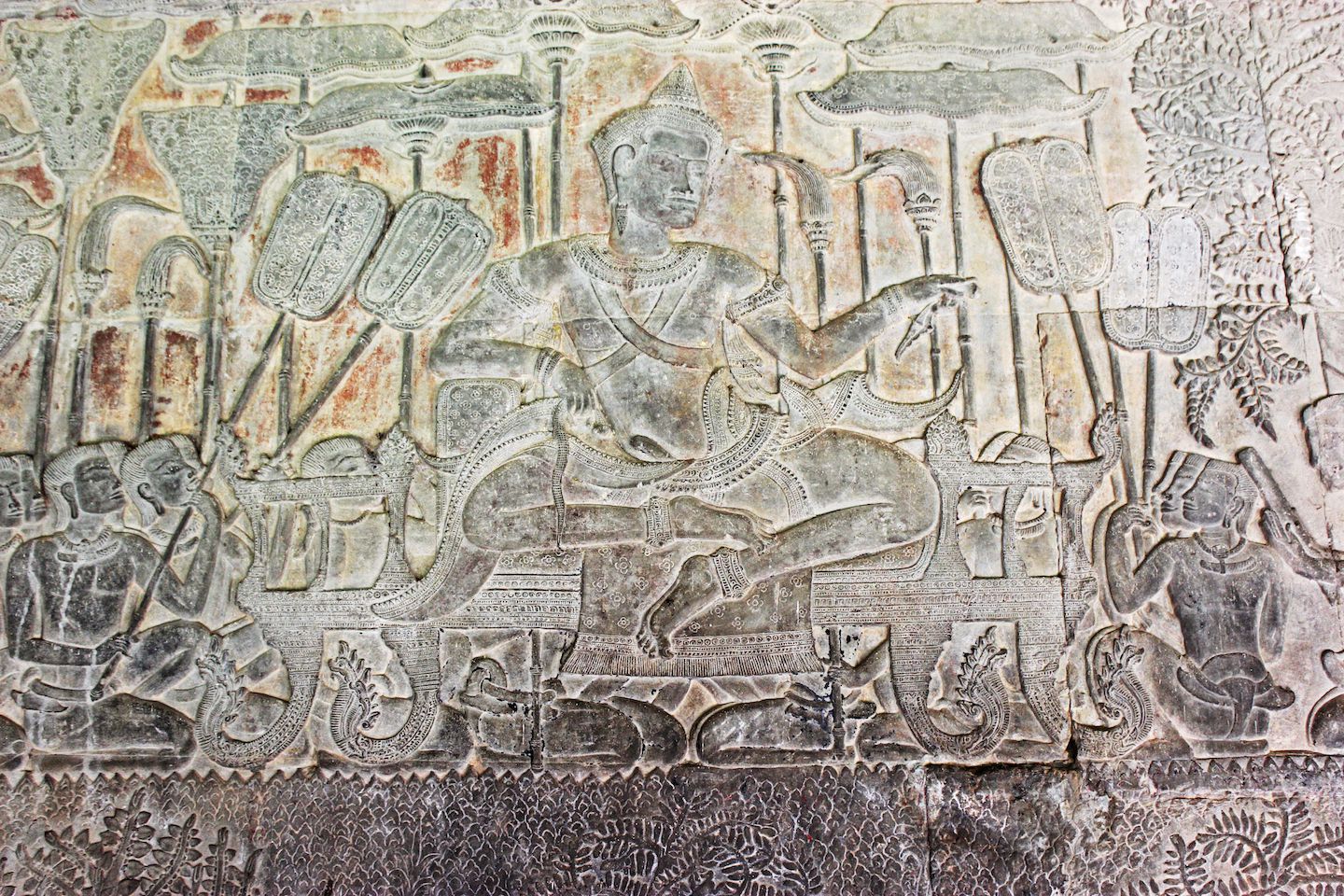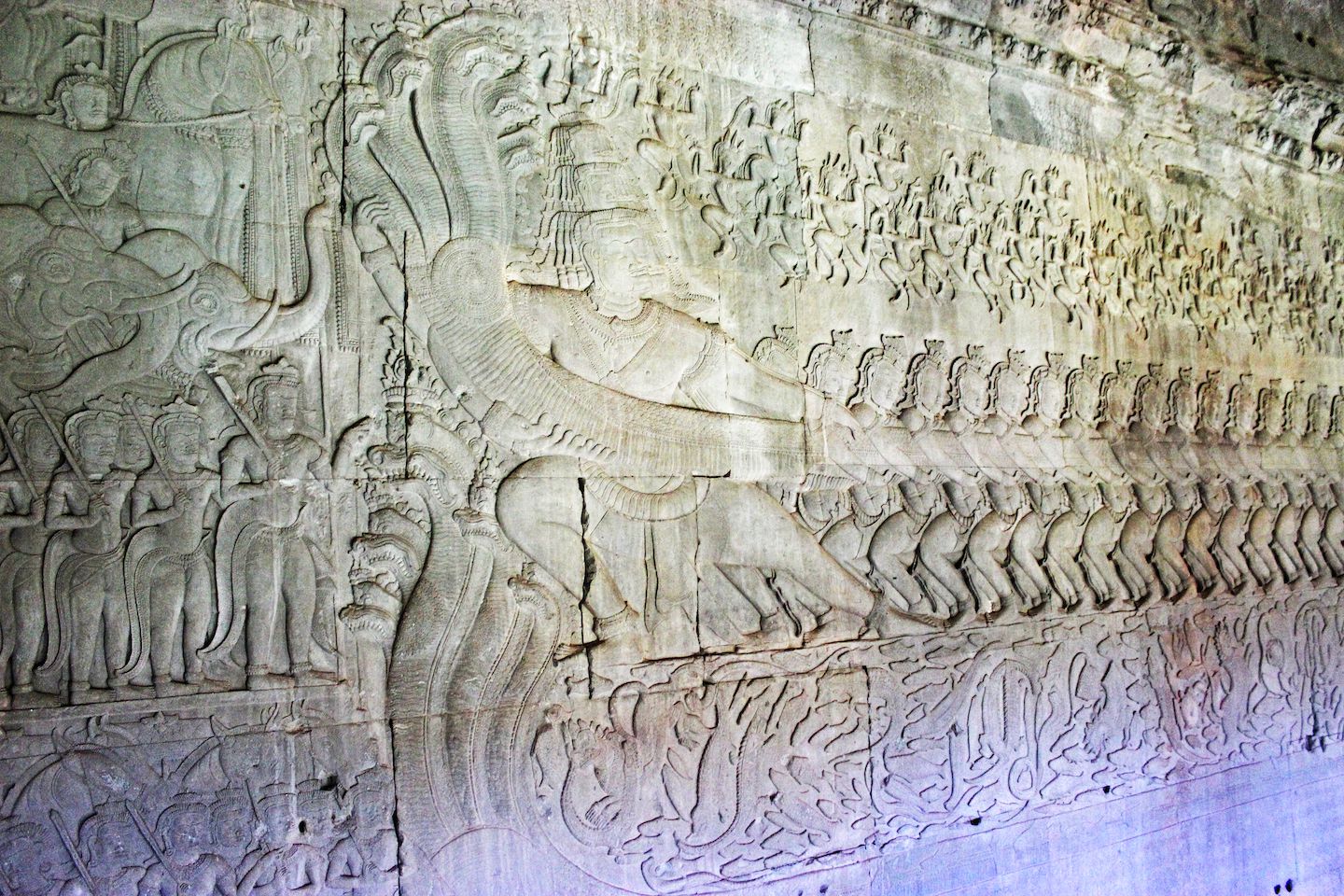This is part I of the Exploring Angkor series of posts on Angkor Archaeological Park.
Exploring Angkor
Part I: Angkor Wat
Part II: Eastern Angkor
Part III: Angkor Thom
Part IV: East Baray and Banteay Srei

If you had asked me what I was most excited about before I left for this year of traveling around SE Asia, one of the things I would have mentioned would probably have been Angkor Wat in Cambodia. So when I got here, I couldn’t believe it. It was so surreal, like living a dream. A Portuguese monk that visited the temple in 1586 said that Angkor Wat “is of such extraordinary construction that it is not possible to describe it with a pen.” That’s exactly how I feel. There is no way to explain all that makes Angkor Wat incredible in one post, but we will mention some highlights.
In preparation for Angkor Wat (and Angkor Archeological Park in general), we watched NatGeo’s Lost City of Angkor Wat and referred to the book Ancient Angkor by Michael Freeman as a guide. Both are highly recommended!
History
The world’s largest religious monument, Angkor Wat was built during the reign of Suryavarman II in the 12th century at the peak of the Khmer Empire. Suryavarman II wanted to show everyone that he was indeed a “king-god” by building something so granduous that it must be divine. He dedicated the temple to Vishnu, “the Preserver,” one of three principal gods in Hinduism. The entirety of Angkor Wat is full of Hinduism as well as classic Khmer architecture.

Structure
There’s a reason why Angkor Wat is on the national flag. It is arguably the most spectacular structure ever designed by man and the Cambodian people could not be more proud of their national symbol. The five peaks of Angkor Wat represent Mount Meru, a heaven replicated on earth. The three enclosures that subsequently get higher and higher are on a piece of square land twice the size of Manhattan. A huge moat surrounds the whole thing, further adding to the splendor and majesty of this masterpiece.

Bas-Reliefs
While I knew about the distinctive outer structure of Angkor Wat, what I didn’t know was that inside all the enclosures were huge galleries filled with bas-reliefs. Not just any regular bas-relief, long walls of hundreds of meters of endless bas-relief with an insane amount of details. Once you’re standing right in front of the galleries, you realize that the carvings are not very deep at all – maybe a few centimeters only. Yet there was so much depth to them. Foreground, background, and layers in between, you could see them all. The craftsmanship was incredible.

Our two favourite galleries were:
The Procession of Suryavarman II
Represented in chronological order, the carvings show the crowning and procession of king Suryavarman II. The first few meters of the bas-relief have two registers. On the top, Suryavarman II sits on his throne, with his ministers and army commanders beside him. On the bottom, princess and ladies of the court are being carried in palanquins. The carvings then join into just one register as the king marches with his army and the procession.

The Churning of the Sea of Milk.
This bas-relief tells the ancient Hindu story where demons (on the left) and gods (on the right) are alternately pulling on a five-headed naga, which is wrapped around Mount Mandara, thus spinning it. This thousand-year-old “tug of war” results in the churning of the sea of milk, the elixir of immortality. In the middle of the carvings, Vishnu supervises the battle, with his turtle avatar supporting Mount Mandara underneath while Indra, the god of sky, supports on top. During the process, a thousand apsaras (beautiful female deities), are created.

Sunset at Angkor Wat
Just like sunrise at Angkor Wat, the sunset is equally to die for (ok, maybe not as famous). The same left pond served as a viewing position for sunset. I personally think photos of Angkor Wat with its water reflection are the best, so we opted for this position inside the temple grounds as opposed to the crowded Phnom Bakheng. Sunset is not as popular as sunrise because while the sun rises behind Angkor Wat, the sun sets in the jungle. Nonetheless, it’s hard to take a bad photo of this magnificent structure at any time of day.

Engineering Feat
I will never cease to be amazed by how well Angkor Wat was designed and executed. It has got to be one of the greatest feats in human engineering, especially considering it was built before industrial times! No mortar or nails were used in building Angkor Wat – all the laterite and sandstone pieces stay together purely based on perfect fits. And it has lasted almost 1000 years! Even with the technology and tools we have today, it’s hard to imagine any structure lasting so long.

Two stones were grinded upon each other so that there were no gaps between them, so that flawless carvings that span over multiple stones could be made. Many of the stones in Angkor Wat also have visible holes in them, thought to have been used as a means of inserting a wooden rod so that the very heavy stones could be maneuvered.

One of the biggest challenges of building and maintaining Angkor Wat was to handle the harsh weather conditions in this part of Cambodia. The dry season is very dry, while the wet season is very wet, which can easily unlevel the ground surface and cause the entire structure to collapse. How did they solve this problem? With the moat! During wet season, the moat captures excess water; during dry season, the water in the moat prevents the ground underneath Angkor Wat from drying out. Such a simple and elegant way to solve a monumental problem.

These are just a few of the many clever engineering designs utilized such that Angkor Wat could not only be built, but still be standing today. I applaud the visionaries and the engineer in me is thoroughly impressed.
Angkor Wat met and exceeded all of my expectations. It was beyond beautiful to look at, but it was the history and meaning behind it all that really blew me away. There are few other places on earth where art, architecture, and history are so seamlessly integrated. I can imagine how people back then could have thought this place was indeed divine, a gateway to the heavens.
For more pictures of Angkor Wat, please visit the gallery!
